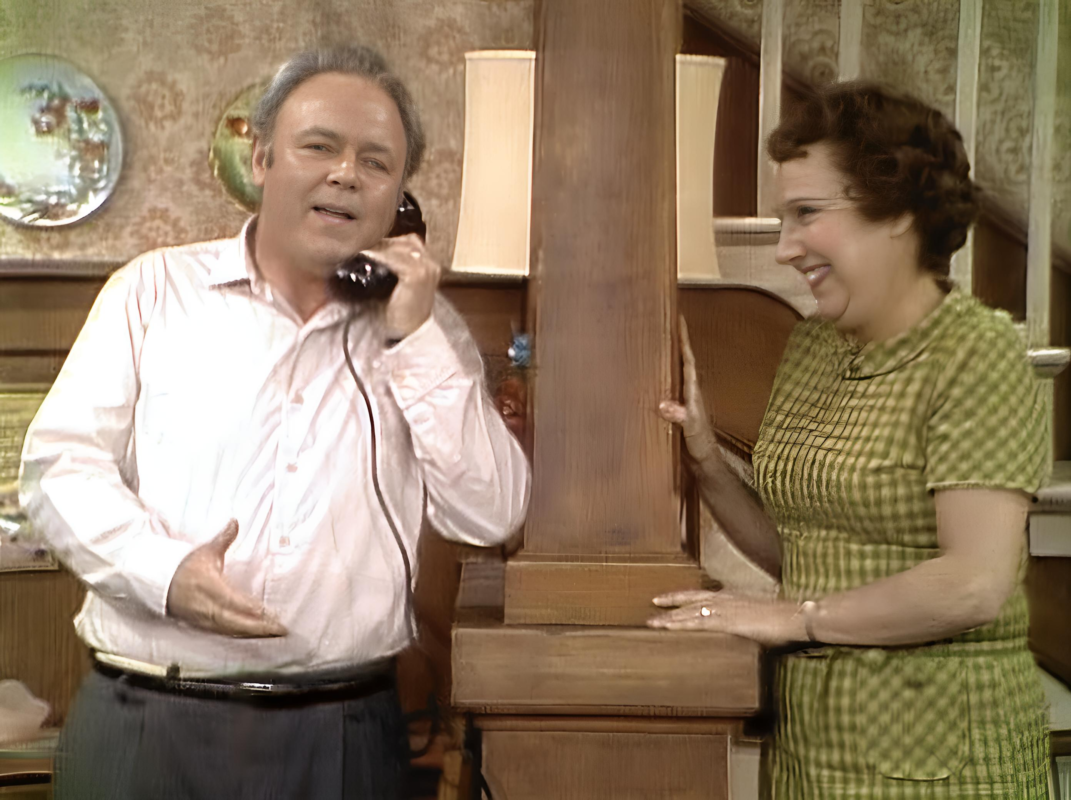
Lorraine Hansberry, the acclaimed playwright and author of “A Raisin in the Sun,” left an indelible mark on American literature and theater with her incisive exploration of race, class, and identity. Her work illuminated the struggles of Black families in America, presenting their stories with depth, dignity, and complexity. Analyzing the 1970s sitcom “All in the Family” through Hansberry’s lens provides a unique perspective on the show’s handling of racial and social issues.
“All in the Family,” created by Norman Lear, was revolutionary for its time, tackling topics such as racism, sexism, and homophobia through the lens of its central character, Archie Bunker. While the show aimed to satirize bigotry and provoke social reflection, Hansberry’s perspective allows us to scrutinize its effectiveness and limitations in portraying the Black experience.
Hansberry’s seminal work, “A Raisin in the Sun,” is celebrated for its realistic and empathetic depiction of a Black family’s aspirations and struggles in a segregated society. She presented her characters not as mere symbols, but as fully realized individuals with their own dreams, flaws, and complexities. In contrast, “All in the Family” often used its Black characters as foils to highlight Archie’s prejudices rather than as protagonists with their own narratives.
Hansberry might argue that “All in the Family” risks trivializing the profound issues it seeks to address. While Archie Bunker’s bigotry is presented humorously, the show’s comedic approach could undermine the seriousness of racism’s impact on Black lives. Hansberry believed in the power of storytelling to reveal the human condition and challenge societal injustices, and she might contend that “All in the Family” does not fully succeed in this regard.
“Art must do more than entertain; it must illuminate the human experience and inspire change,” Hansberry would likely assert. “While satire has its place, it must be wielded carefully to avoid diminishing the very issues it seeks to critique.”
Furthermore, Hansberry’s work emphasized the importance of presenting Black characters with authenticity and depth. In “A Raisin in the Sun,” she crafted a narrative that explored the intersecting pressures of race, economic hardship, and family dynamics. Applying this standard to “All in the Family,” one could argue that the show falls short in giving its Black characters the same narrative richness and autonomy.
Hansberry would advocate for a more nuanced portrayal of Black lives, one that goes beyond the reactions of a white protagonist to include the voices and experiences of Black individuals themselves. She might criticize “All in the Family” for its tendency to center Archie’s journey of confronting his prejudices, rather than delving deeply into the lives and perspectives of its Black characters.
“True progress requires that we see Black characters not just as tools to teach white characters a lesson, but as individuals with their own stories and agency,” Hansberry might contend.
Moreover, Hansberry’s work highlighted the systemic nature of racism and the need for societal transformation. While “All in the Family” addresses personal prejudices, it often stops short of examining the broader structures that perpetuate racial inequality. Hansberry would likely call for a more comprehensive critique that challenges viewers to confront these systemic issues.
“Racism is not just a matter of individual attitudes but of deeply entrenched systems and structures,” Hansberry would emphasize. “Media must encourage audiences to recognize and challenge these larger forces.”
In addition, Hansberry might critique the show’s reliance on humor to address serious social issues. While comedy can be a powerful tool for social commentary, Hansberry might argue that the balance between humor and the gravity of racism was not always effectively maintained in “All in the Family.” The risk, she would suggest, is that the audience might laugh at the bigotry without fully engaging with its harmful consequences.
“Humor has its place, but we must ensure it does not overshadow the urgency and seriousness of the issues we seek to address,” Hansberry might warn.
By analyzing “All in the Family” through Lorraine Hansberry’s lens, we can appreciate the show’s pioneering efforts while also recognizing its limitations. Hansberry’s insights remind us of the importance of authentic representation, the need for systemic critiques, and the power of media to both entertain and educate.
To truly honor Hansberry’s legacy, contemporary media must strive to elevate marginalized voices, provide nuanced and authentic portrayals of racial experiences, and challenge the systemic structures that sustain inequality. Only then can we create media that not only entertains but also enlightens and empowers.
